Monday, October 25 – Savannah, Georgia
- Mary Reed

- Oct 25, 2021
- 16 min read

The photo is of the townhouse my sisters and a friend rented for our vacation to Savannah. It was beautiful inside with much high-end Asian décor, large ornate mirrors and a chandelier in the bathroom. The person who signed the guest book before us was an artist from Colorado who drew a perfect replica of the outside of the townhouse! Our neighborhood was full of historic townhouses like ours surrounded by lush vegetation and trees dripping Spanish moss. There was a breakfast restaurant (where I had Elvis French toast with peanut butter and banana), coffee shop and lovely park all within walking distance. We went to Tybee Island where we saw many dolphins on a very informative tour, saw exotic birds and got to feed alligators with food dangling off a cane pole. We took the hop on-hop off bus tour where we toured the Cathedral of St. John the Baptist which rivaled any of the magnificent European cathedrals. We ate fabulous food at Corleone’s and Vic’s on the River. Even had delectable desserts at Better Than Sex, a dessert restaurant that was almost completely in the dark with a very suggestive menu, narrated by the waiter. I enjoyed strolling along the waterfront, checking out all the shops and restaurants. Savannah is a fascinating, historic city. Let’s learn more about it.

According to Wikipedia, Savannah is the oldest city in the U.S. state of Georgia and is the county seat of Chatham County. Established in 1733 on the Savannah River, the city of Savannah became the British colonial capital of the Province of Georgia and later the first state capital of Georgia. A strategic port city in the American Revolution and during the American Civil War, Savannah is today an industrial center and an important Atlantic seaport. It is Georgia's fifth-largest city, with a 2020 U.S. Census population of 147,780. The Savannah metropolitan area, Georgia's third-largest, had a 2020 population of 404,798.
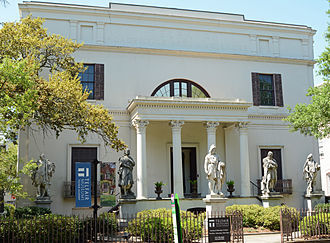
Each year Savannah attracts millions of visitors to its cobblestone streets, parks, and notable historic buildings. These buildings include the birthplace of Juliette Gordon Low — founder of the Girl Scouts of the USA, Georgia Historical Society — the oldest continually operating historical society in the South, Telfair Academy of Arts and Sciences — one of the South's first public museums, First African Baptist Church — one of the oldest African-American Baptist congregations in the United States, Temple Mickve Israel — the third-oldest synagogue in the U.S. and Central of Georgia Railway roundhouse complex — the oldest standing antebellum rail facility in the U.S.
Savannah's downtown area, which includes the Savannah Historic District, Savannah Victorian Historic District and 22 parklike squares is one of the largest National Historic Landmark Districts in the United States, designated by the U.S. government in 1966. Downtown Savannah largely retains the original town plan prescribed by founder James Oglethorpe, a design now known as the Oglethorpe Plan.
Savannah was the host city for the sailing competitions during the 1996 Summer Olympics held in Atlanta.

History
On February 12, 1733, General James Oglethorpe and settlers from the ship Anne landed at Yamacraw Bluff and were greeted by Tomochichi, the Yamacraws and Indian traders John and Mary Musgrove. Mary Musgrove often served as an interpreter. The city of Savannah was founded on that date, along with the colony of Georgia. In 1751, Savannah and the rest of Georgia became a royal colony and Savannah was made the colonial capital of Georgia.
By the outbreak of the American Revolutionary War, Savannah had become the southernmost commercial port in the 13 colonies. British troops took the city in 1778, and the following year a combined force of American and French soldiers, including Haitians, failed to rout the British at the Siege of Savannah. The British did not leave the city until July 1782. In December 1804 the state legislature declared Milledgeville the new capital of Georgia.
Savannah, a prosperous seaport throughout the 19th century, was the Confederacy's sixth most populous city and the prime objective of General William T. Sherman's March to the Sea. Early on December 21, 1864, local authorities negotiated a peaceful surrender to save Savannah from destruction, and Union troops marched into the city at dawn.
Savannah was named for the Savannah River, which probably derives from variant names for the Shawnee, a Native American people who migrated to the river in the 1680s. The Shawnee destroyed another Native people, the Westo, and occupied their lands at the head of the Savannah River's navigation on the fall line, near present-day Augusta. These Shawnee, whose Native name was Ša·wano·ki — literally, "southerners," were known by several local variants, including Shawano, Savano, Savana and Savannah. Another theory is that the name Savannah refers to the extensive marshlands surrounding the river for miles inland and is derived from the English term "savanna," a kind of tropical grassland, which was borrowed by the English from Spanish sabana and used in the southern colonies. The Spanish word comes from the Taino word zabana. Still other theories suggest that the name Savannah originates from Algonquian terms meaning not only "southerners" but perhaps "salt."
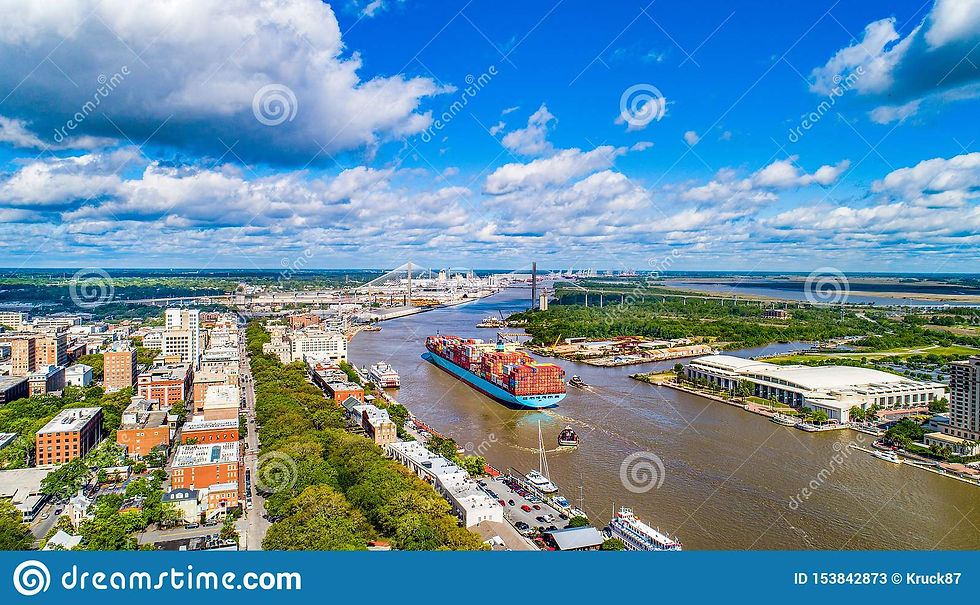
Geography
Savannah lies on the Savannah River, approximately 20 miles upriver from the Atlantic Ocean. According to the United States Census Bureau in 2011, the city has a total area of 108.7 square miles, of which 103.1 square miles is land and 5.6 square miles is water or 5.15%. Savannah is the primary port on the Savannah River and the largest port in the state of Georgia. It is also located near the U.S. Intracoastal Waterway. Georgia's Ogeechee River flows toward the Atlantic Ocean some 16 miles south of downtown Savannah and forms the southern city limit.
Savannah is prone to flooding, due to abundant rainfall, an elevation at just above sea level and the shape of the coastline, which poses a greater surge risk during hurricanes. The city currently uses five canals. In addition, several pumping stations have been built to help reduce the effects of flash flooding.
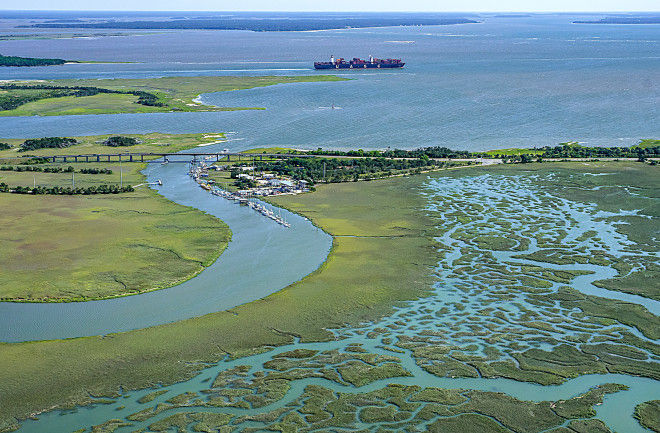
Climate
Savannah's climate is classified as humid subtropical. In the Deep South, this is characterized by long and almost tropical summers and short, mild winters. Savannah records few days of freezing temperatures each year and has rare snowfall. Due to its proximity to the Atlantic coast, Savannah rarely experiences temperatures as extreme as those in Georgia's interior. Nevertheless, the extreme temperatures have officially ranged from 105 °F on July 20, 1986 and July 12, 1879, down to 3 °F during the January 1985 Arctic outbreak.
Seasonally, Savannah tends to have hot and humid summers with frequent but brief thunderstorms that develop in the warm and tropical air masses, which are common. Although summers in Savannah are frequently sunny, half of Savannah's annual precipitation falls during the months of June through September. Average dewpoints in summer range from 67.8 to 71.6 °F. Winters in Savannah are mild and sunny with average daily high temperatures close to 60 °F. November and December are the driest months recorded at Savannah–Hilton Head International Airport. Each year, Savannah reports 24 days on average with low temperatures below freezing, though in some years fewer than 10 nights will fall below freezing. Although decades might pass between snowfall events, Savannah has experienced snow on rare occasions, most notably in December 1989, when up to 3.9 inches was recorded in one day in parts of the city.
Savannah is at risk for hurricanes, particularly of the Cape Verde type of storms that take place during the peak of the season. Because of its location in the Georgia Bight —the arc of the Atlantic coastline in Georgia and northern Florida — as well as the tendency for hurricanes to re-curve up the coast, Savannah has a lower risk of hurricanes than some other coastal cities such as Charleston, South Carolina. Savannah was seldom affected by hurricanes during the 20th century, with one exception of being hit by Hurricane David in 1979. However, the historical record shows that the city was frequently affected during the second half of the 19th century. The most prominent of these storms was the 1893 Sea Islands hurricane, which killed at least 2,000 people. This estimate may be low, as deaths among the many impoverished rural African Americans living on Georgia's barrier islands may not have been reported.
Savannah was most recently affected by an active 2016 hurricane season, including Hurricane Matthew which made a partial eyewall landfall and was brushed by Hurricane Irma in 2017.
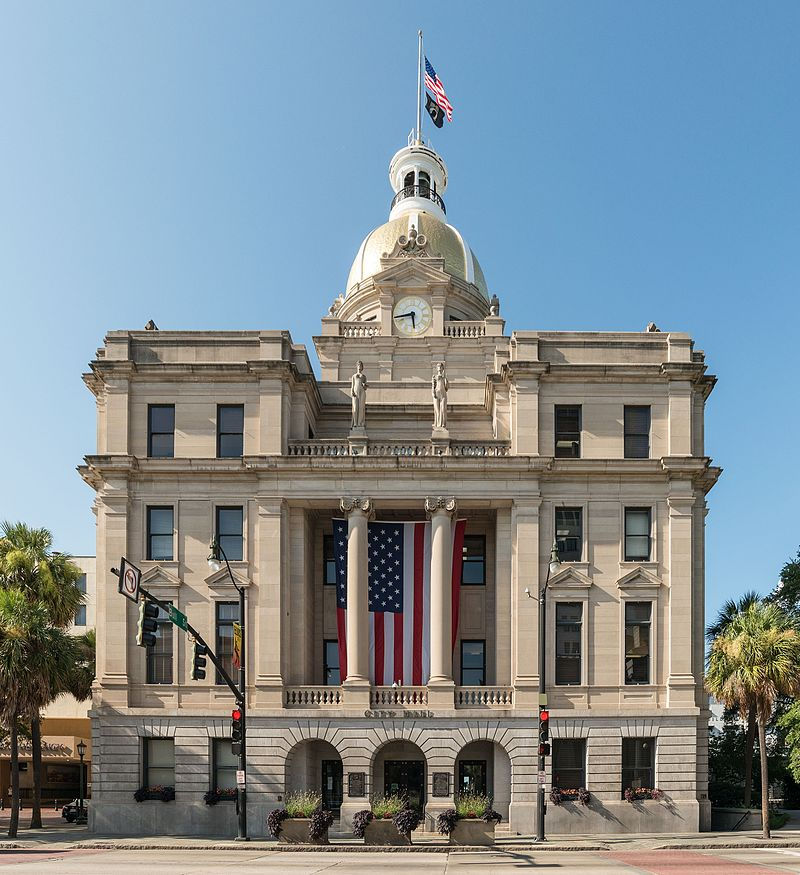
Government
Savannah adopted a council-manager form of government in 1954. The city council consists of the mayor and eight aldermen, six of whom are elected from one of six aldermanic districts, with each district electing one member. The other two members and the mayor are elected at-large.
The council levies taxes, enacts ordinances, adopts the annual budget and appoints the city manager. The city manager enacts the policies and programs established by council, recommends an annual budget and work programs, appoints bureau and department heads and exercises general supervision and control over all employees of the city.
The Savannah Police Department and the Chatham County Police Department have a number of specialty units, including K-9, SWAT, Bomb Squad, Marine Patrol, Dive, Air Support and Mounted Patrol. The 9-1-1 Communications Dispatch Center handles all 9-1-1 calls for service within the county and city, including fire and EMS. The Savannah Fire Department serves the City of Savannah, and there are separate municipal firefighting organizations elsewhere in Chatham County.
The Georgia Department of Corrections operates the Coastal State Prison in Savannah.
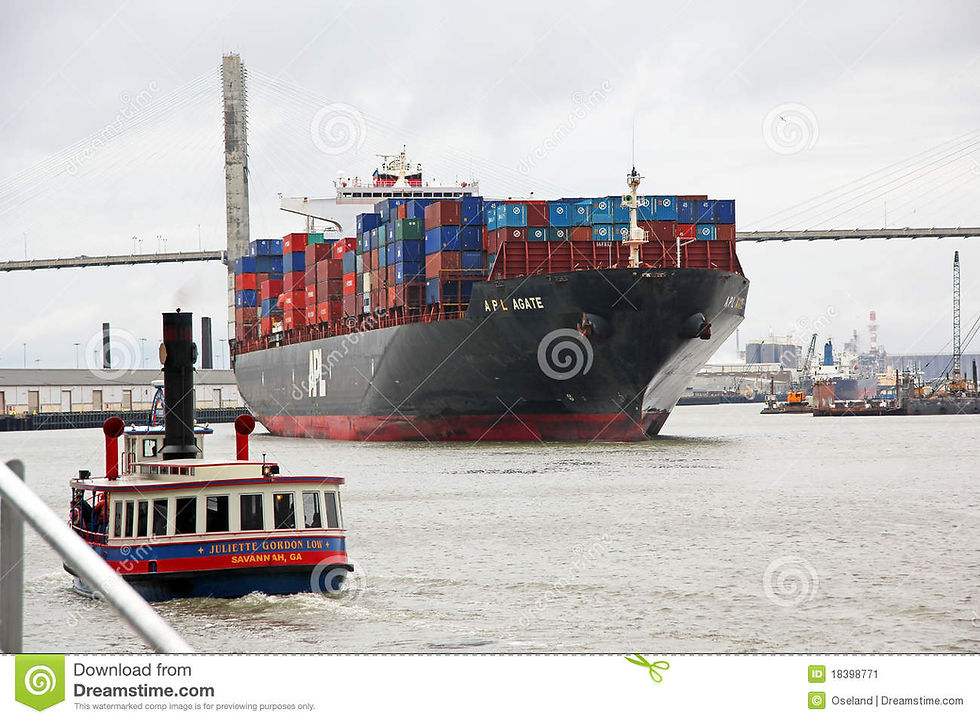
Economy
Agriculture was essential to Savannah's economy during its first two centuries. Silk and indigo production, both in demand in England, were early export commodities. By 1767, almost a ton of silk per year was exported to England.
Georgia's mild climate offered perfect conditions for growing cotton, which became the dominant commodity after the American Revolution. Its production under the plantation system and shipment through the Port of Savannah helped the city's European immigrants to achieve wealth and prosperity.
In the 19th century, the Port of Savannah became one of the most active in the United States, and Savannahians had the opportunity to consume some of the world's finest goods, imported by foreign merchants. Savannah's port has always been a mainstay of the city's economy. In the early years of the United States, goods produced in the New World had to pass through Atlantic ports such as Savannah's before they could be shipped to England.
Savannah's first hotel, City Hotel, was completed in 1821. It also housed the city's first United States Post Office branch.
Between 1912 and 1968, the Savannah Machine & Foundry Company was a shipbuilder in Savannah.
The Port of Savannah, manufacturing, the military, and tourism have become Savannah's four major economic drivers in the twenty-first century. In 2006, the Savannah Area Convention & Visitors Bureau reported over 6.85 million visitors to the city during the year. By 2011, the Bureau reported that the number of visitors the city attracted increased to 12.1 million. Lodging, dining, entertainment and visitor-related transportation account for over $2 billion in visitors' spending per year and employ over 17,000.
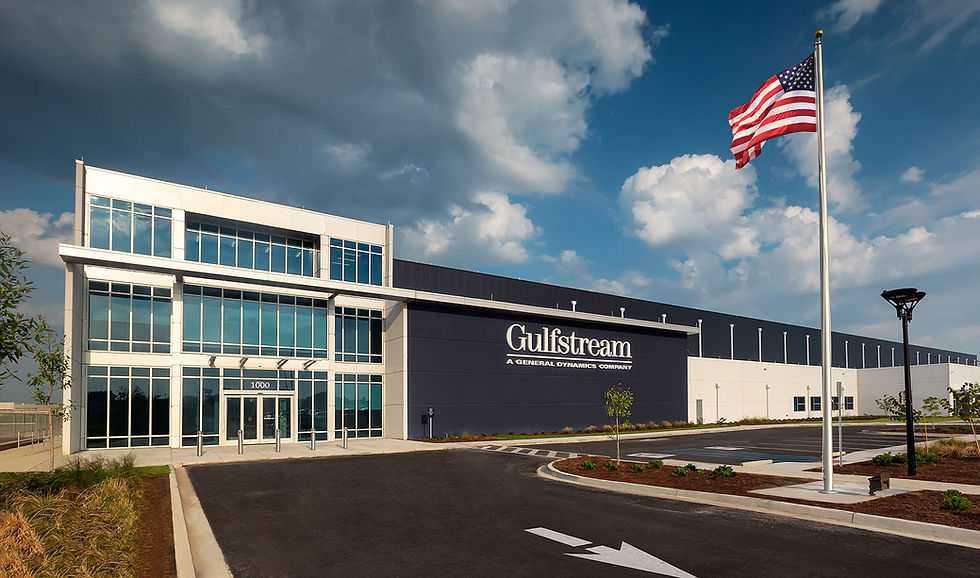
For years, Savannah was the home of Union Camp Corp., which housed the world's largest paper mill. The plant is now owned by International Paper, and it remains one of Savannah's largest employers. Savannah is also home to the Gulfstream Aerospace company, maker of private jets, as well as various other large industrial interests. TitleMax is headquartered in Savannah. Morris Multimedia, a newspaper and television company, is also based in Savannah.
In 2000, JCB, the third-largest producer of construction equipment in the world and the leading manufacturer of backhoes and telescopic handlers, built its North American headquarters in Chatham County near Savannah in Pooler on I-95 near Savannah-Hilton Head International Airport.
Between 2009 and 2017, Savannah was North America's fourth-largest port for shipping container traffic. In 2019, the port continues to see record growth with a reported 4.5 million, 20-foot equivalent container units being moved in the fiscal year.
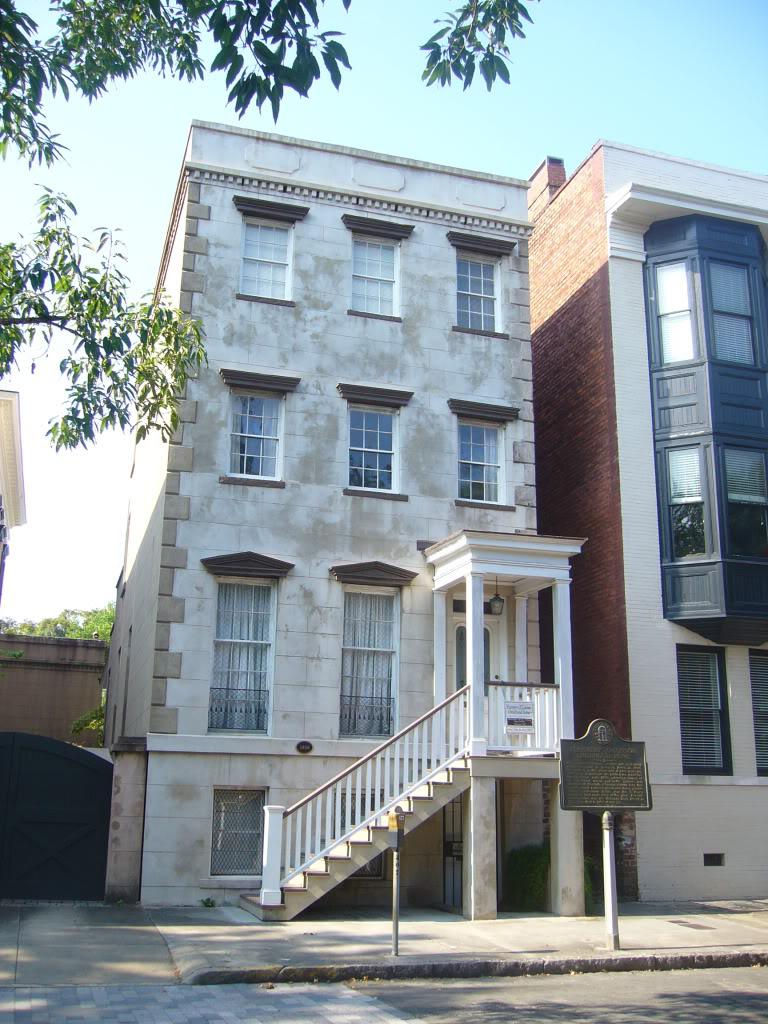
Books and literature
- The Savannah Book Festival — an annual book fair held on Presidents' Day weekend in the vicinity of historic Telfair and Wright squares — includes free presentations by more than 35 contemporary authors. Special events with featured writers are offered at nominal cost throughout the year.
- Flannery O'Connor Childhood Home – a museum house dedicated to the work and life of the acclaimed fiction writer Flannery O'Connor, who was born in Savannah and lived in the city until the age of 15. In addition to its museum, the house offers literary programming, including the annual Ursrey Lecture honoring American fiction writers.
- Other notable authors with ties to Savannah include Conrad Aiken and James Alan McPherson. The songwriter Johnny Mercer was a native Savannahian.
Dance
Savannah Ballet Theatre — established in 1998 as a nonprofit organization — has grown to become the city's largest dance company.
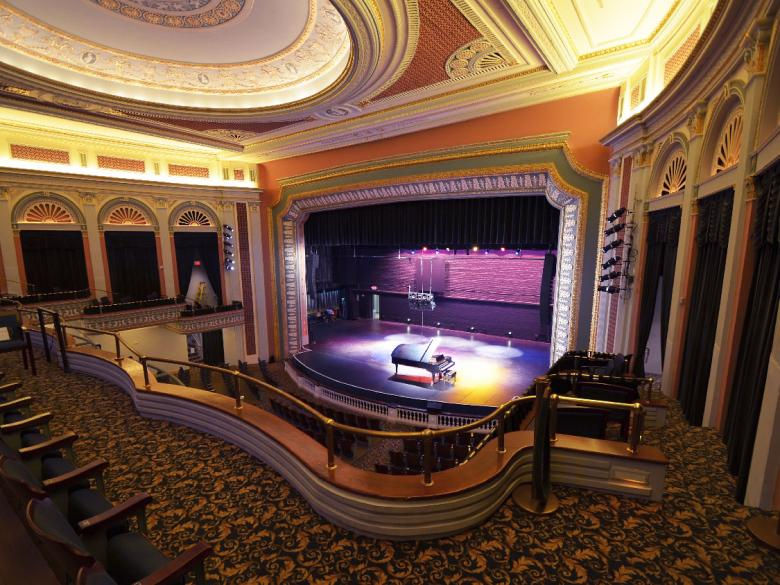
Music
- Coastal Jazz Association – presents a variety of jazz performances throughout the year in addition to hosting the annual Savannah Jazz Festival.
- Savannah Children's Choir – non-profit, auditioned choir for children in 2nd through 8th grades that performs throughout the community and in annual holiday and spring concerts.
- Savannah Concert Association – presents a variety of guest artists for chamber music performances each season. Performances are generally held in the Lucas Theatre for the Arts.
- Savannah Music Festival – an annual music festival of diverse artists which is Georgia's largest musical arts festival and is nationally recognized as one of the best music festivals in the world.
- Savannah Orchestra – Savannah's professional orchestra, which presents an annual season of classical and popular concert performances.
- Savannah Philharmonic – professional orchestral and choral organization presenting year-round concerts — classical, pops, education.
- Savannah Winds – amateur concert band hosted by the music department of Georgia Southern University.
- Armstrong Youth Orchestra – Savannah's professional orchestra for elementary, middle school, high school and some college students.
- Annual Haitian Flag Day – an annual festival of diverse artists, music, and various festivities.

Theatre and performance
- American Traditions Vocal Competition – an annual vocal competition that desires to foster and preserve traditions of musical expression significant in the culture of the United States in the past and present. The competition includes the Johnny Mercer Award.
- Savannah Children's Theatre – a nonprofit, year-round drama theater company geared toward offering elementary through high school students — and adults — opportunities for participation in dramatic and musical productions.
- Savannah Community Theatre – a full theater season with a diverse programming schedule, featuring some of Savannah's finest actors in an intimate, three-quarter-round space.
- Little Theatre of Savannah – founded in 1950, Little Theatre of Savannah Inc. is a nonprofit, volunteer-based community organization dedicated to the celebration of the theater arts.
Recognizing the unique social value, expressive fulfillment and opportunity for personal growth that theater provides its participants, the Little Theatre of Savannah invites all members of the community to participate both on- and off-stage.
- Savannah Theatre – Savannah's only fully professional resident theater, producing music revues with live singers, dancers and the most rockin' band in town. Performances happen year-round, with several different titles and a holiday show.
- Savannah Repertory Theatre – part of the cultural fabric of Savannah since 2016 and the city’s only nonprofit professional theater.
- Lucas Theatre for the Arts – founded in December 1921, the Lucas Theatre is one of several theaters owned by the Savannah College of Art and Design. It hosts the annual Savannah Film Festival.
- Trustees Theater – once known as the Weis Theater, which opened February 14, 1946, this theater reopened as the Trustees Theater on May 9, 1998, and hosts a variety of performances and concerts sponsored by the Savannah College of Art and Design. SCAD also owns the building.
- Odd Lot Improv – founded in 2010, a family-friendly improv comedy troupe performing weekly shows on Mondays and Fridays.
- House of Gunt – alternative drag collective founded in 2013 with monthly shows at Club One on top of other performances around the city throughout the year.
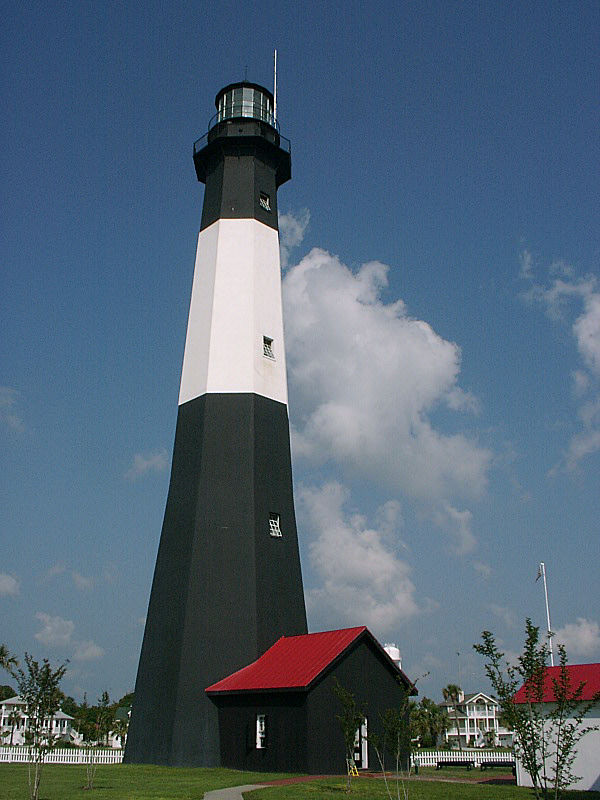
Points of interest
Savannah's architecture, history, and reputation for Southern charm and hospitality are internationally known. The city's former promotional name was "Hostess City of the South," a phrase still used by the city government. An earlier nickname was "the Forest City," in reference to the large population and species of oak trees that flourish in the Savannah area. These trees were especially valuable in shipbuilding during the 19th century. In 2019, Savannah attracted 14.8 million visitors from across the country and around the world. Savannah's downtown area is one of the largest National Historic Landmark districts in the United States.
The city's location offers visitors access to the coastal islands and the Savannah Riverfront, both popular tourist destinations. Tybee Island, formerly known as "Savannah Beach," is the site of the Tybee Island Light Station, the first lighthouse on the southern Atlantic coast. Other picturesque towns adjacent to Savannah include the shrimping village of Thunderbolt and three residential areas that began as summer resort communities for Savannahians: Beaulieu, Vernonburg and the Isle of Hope.
The Savannah International Trade & Convention Center is located on Hutchinson Island, across from downtown Savannah and surrounded by the Savannah River. The Belles Ferry connects the island with the mainland, as does the Eugene Talmadge Memorial Bridge.
The Georgia Historical Society — an independent educational and research institution — has a research center in Savannah. The research center's library and archives hold the oldest collection of materials related to Georgia history.
The Savannah Civic Center on Montgomery Street is host to more than 900 events each year.
Savannah has consistently been named one of "America's Favorite Cities" by Travel + Leisure. In 2012, the magazine rated Savannah highest in "Quality of Life and Visitor Experience." Savannah was also ranked first for "Public Parks and Outdoor Access," visiting in the fall and as a romantic escape. Savannah was also named as America's second-best city for "Cool Buildings and Architecture," behind only Chicago.
The mile-long Jones Street has been described as one of the most charming streets in America.
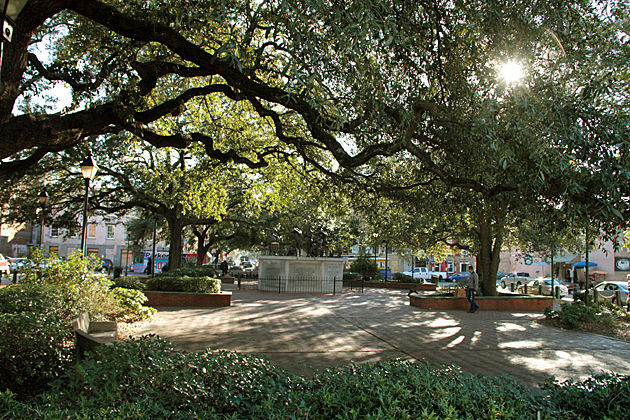
Squares
Savannah is noted for its 22 squares, small parks arranged along five historic streets running north to south. Each street has from three to five squares. The squares vary in size and character, from the formal fountain and monuments of the largest, Johnson, to the playgrounds of the smallest, Crawford. Elbert, Ellis and Liberty Squares are classified as the three "lost squares," destroyed in the course of urban development during the 1950s. Elbert and Liberty Squares were paved over to make way for a realignment of U.S. Highway 17, while Ellis Square was demolished to build the City Market parking garage. The city restored Ellis Square after razing the City Market parking garage. The garage has been rebuilt as an underground facility, Whitaker Street Parking Garage, and it opened in January 2009. The restored Ellis Square opened in March 2010. Separate efforts are now under way to revive Elbert and Liberty Squares.
Franklin Square is the site of Savannah's Haitian Monument, which commemorates the heroic efforts of the Chasseurs-Volontaires de Saint-Domingue in the 1779 Siege of Savannah and for an independent America. One of the few black regiments to fight for the American side in the Revolutionary War, the soldiers were recruited from present-day Haiti, until 1804 the French colony of Saint-Domingue. Chippewa Square honors the Battle of Chippawa during the War of 1812. It features a large statue of James Oglethorpe, the city's founder. In popular culture, the square is the location of the park bench seen in the 1994 film “Forrest Gump” from which the title character dispenses wisdom to others waiting for a bus.
Because both Calhoun and Whitefield Squares were named for prominent slaveholders, a movement was begun in 2021 to rename them Sankofa Square and Jubilee Square, respectively.

Historic churches and synagogues
Founded in 1733, with the establishment of the Georgia colony, Christ Church (Episcopal) is the longest continuous Christian congregation in Georgia. Early rectors include the Methodist evangelists John Wesley and George Whitefield. Located on the original site on Johnson Square, Christ Church continues as an active congregation.
The Independent Presbyterian Church, which was founded in 1755, is located near Chippewa Square. The church's current sanctuary (its third) dates from the early 1890s.
The First Bryan Baptist Church is an African American church that was organized by Andrew Bryan in 1788. The site was purchased in 1793 by Bryan, a former slave who had also purchased his freedom. The first structure was erected there in 1794. By 1800, the congregation was large enough to split: those at Bryan Street took the name of First African Baptist Church, and Second and Third African Baptist churches were also established. The current sanctuary of First Bryan Baptist Church was constructed in 1873.
In 1832, a controversy over doctrine caused the First African Baptist congregation at Bryan Street to split. Some members left, taking with them the name of First African Baptist Church. In 1859, the members of this new congregation — most of whom were slaves — built their current church building on Franklin Square.
In 1874, the St. Benedict the Moor Church was founded in Savannah, the first African-American Catholic church in Georgia, and one of the oldest in the Southeast.
The oldest standing house of worship is First Baptist Church — built in 1833 — located on Chippewa Square. Other historic houses of worship in Savannah include: Cathedral of St. John the Baptist (Roman Catholic), Temple Mickve Israel (the third oldest synagogue in the U.S.) and St. John's Church (Episcopal).
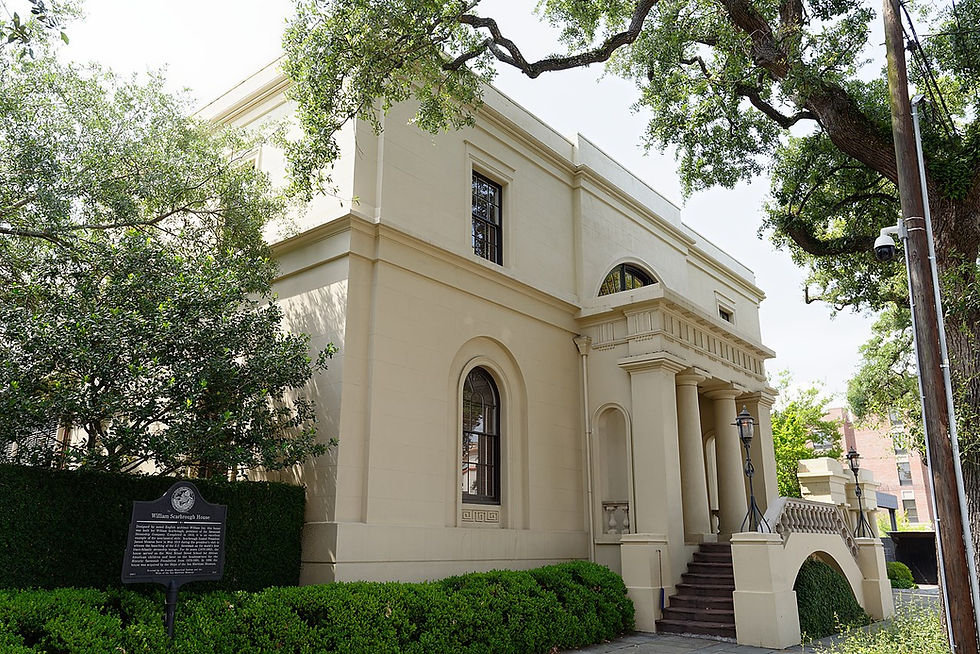
Historic homes
Among the historic homes that have been preserved are: the Olde Pink House, Sorrel–Weed House, Juliette Gordon Low's birthplace, Davenport House Museum, Green–Meldrim House, Owens–Thomas House, William Scarbrough House and the Wormsloe plantation of Noble Jones. Mercer Williams House, the former home of Jim Williams in Monterey Square, is the main location of “Midnight in the Garden of Good and Evil,” the famous novel about Savannah by John Berendt. Opulent buildings that succumbed to fire include the mansions at Bonaventure Plantation and Greenwich Plantation.
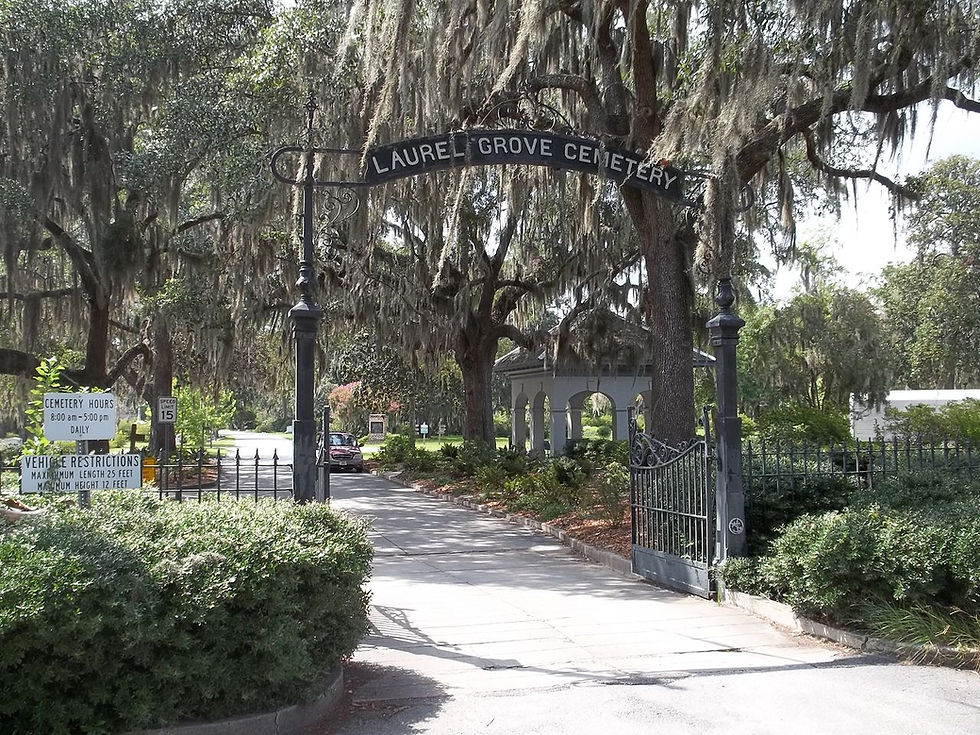
Historic cemeteries
Colonial Park Cemetery was the city's principal burial ground for much of the 18th century, when Georgia was a British colony. Laurel Grove Cemetery — with the graves of many Confederate soldiers and African American slaves — was Savannah's chief municipal cemetery during the 19th century. Bonaventure Cemetery is a former plantation and the final resting place for some illustrious Savannahians. Also located in Savannah are the Mordecai Sheftall Cemetery and the Levi Sheftall Family Cemetery, which both date back to the second half of the 18th century.
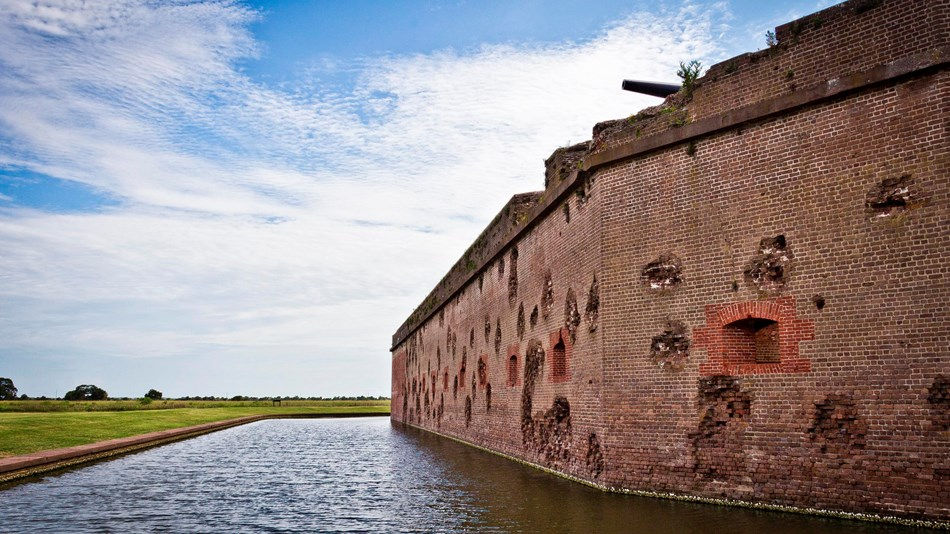
Historic forts
Fort Jackson — named for the Georgia politician James Jackson, not Andrew Jackson — lies on the Savannah River, one mile east of Savannah's Historic District. Built between 1808 and 1812 to protect the city from attack by sea, it was one of several Confederate forts defending Savannah from Union forces during the Civil War. Fort Pulaski National Monument — located on Cockspur Island, 17 miles east of Savannah — preserves the largest fort protecting the city during the war. The Union Army bombarded Fort Pulaski in April 1862 with the aid of a new rifled cannon. Confederate troops soon surrendered, and the cannon effectively rendered all brick fortifications obsolete.
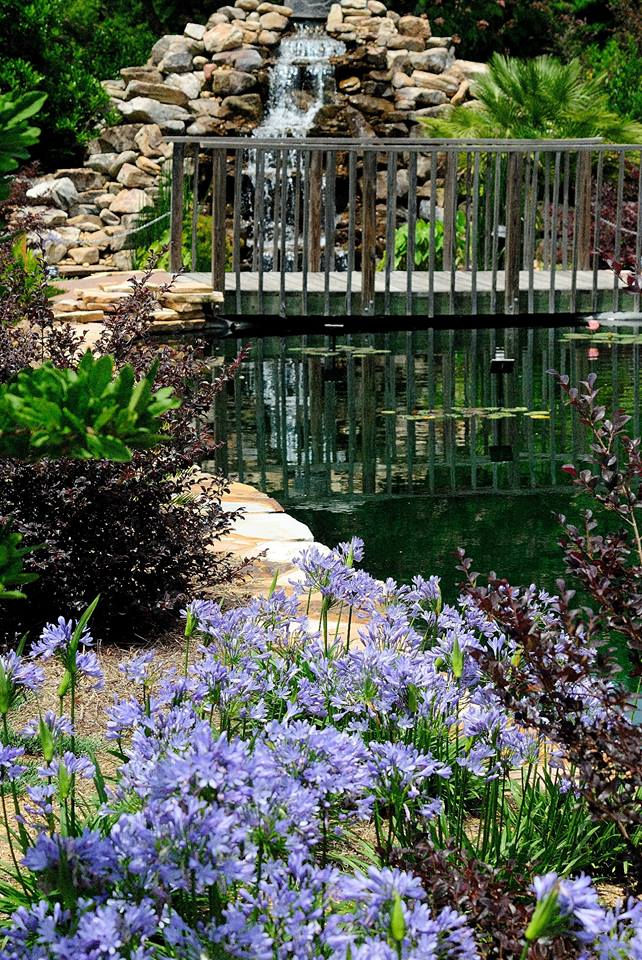
Other attractions
- American Prohibition Museum – located in Savannah's City Market, this unique museum displays the history of prohibition in America from 1907 to 1933. It also traces the roots of NASCAR, which developed from the era's bootlegging operations.
- Club One – former home of The Lady Chablis and featured in the 1994 book and 1997 film “Midnight in the Garden of Good and Evil.”
- Coastal Georgia Botanical Gardens – a developing botanical garden located at Bamboo Farm, a former USDA plant-introduction station south of Savannah that began operations in 1919.
- Crystal Beer Parlor, the city's oldest restaurant.
- Oatland Island Wildlife Center – located east of Savannah, a facility owned and operated by the Savannah-Chatham County Board of Education and featuring wildlife from surrounding coastal Georgia and South Carolina.
- Leopold's Ice Cream, a popular ice cream parlor.
- Ossabaw Island – an environmentally protected and commercially undeveloped barrier island south of Savannah.
- Pinkie Masters Bar – a popular Savannah watering hole and the site of presidential visits and political campaigns. Pinkie Masters was a local political figure and a friend of President Jimmy Carter, who made several visits to the bar and the city.
- Pirates' House – historic restaurant and tavern located in downtown Savannah.
- Ralph Mark Gilbert Civil Rights Museum – a museum dedicated to African American history in Savannah.
- Skidaway Island – an affluent suburban community south of Savannah that hosts Skidaway Island State Park, the University of Georgia Aquarium and the Skidaway Institute of Oceanography.
- Tybee Island – popular Atlantic resort town 17 miles east of Savannah with public beaches, a lighthouse and other attractions.




Comments